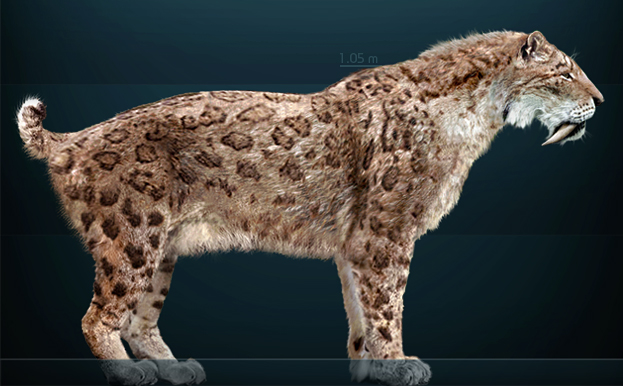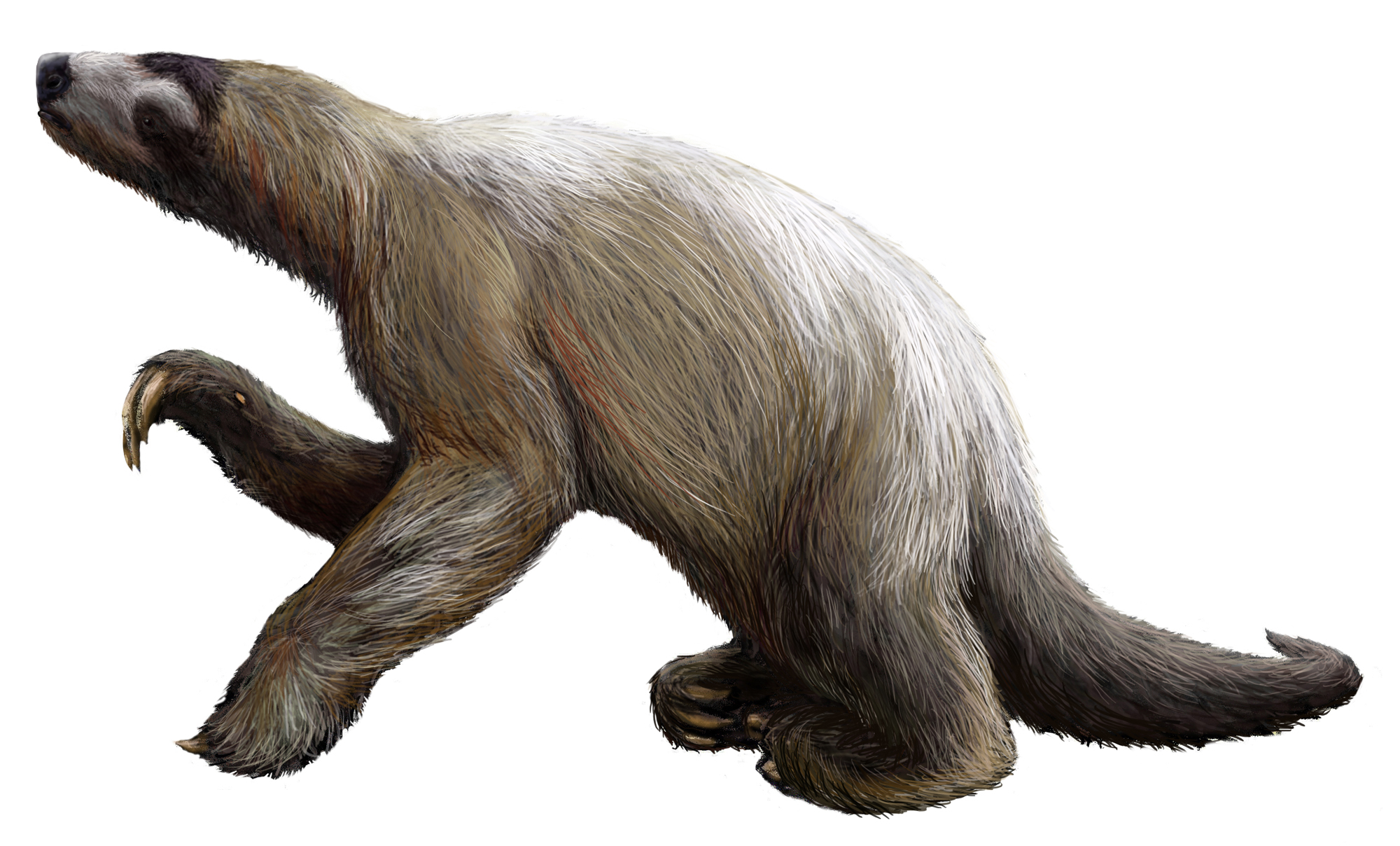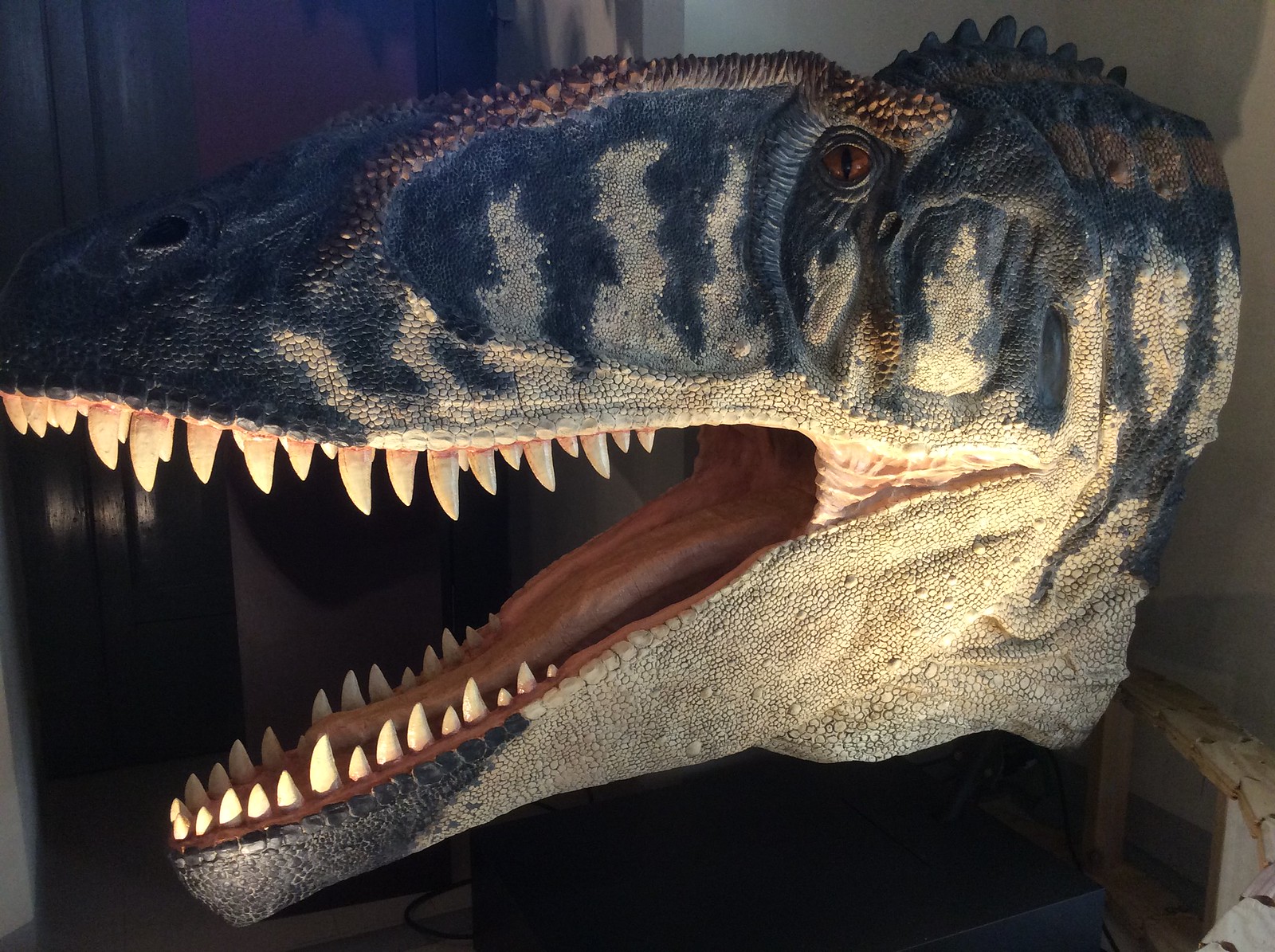Post by Infinity Blade on Jan 17, 2014 4:49:22 GMT 5
Smilodon fatalis
Smilodon /?sma?l?d?n/, is an extinct genus of machairodont felid. It is perhaps the best known saber-toothed cat and lived in North America during the Pleistocene epoch (2.5 mya–10,000 years ago). Several fossils have been found with one of the largest collections taken from the La Brea Tar Pits. Three species of the genus are known and they vary in size and build. Overall, Smilodon was more robustly built than any modern cat, with particularly well-developed forelimbs and exceptionally long upper canines. Its jaw had a bigger gape than modern cats and its upper canines were slender and fragile, being adapted for precision killing. These attributes made Smilodon a specialized hunter of large herbivores like bison and camels. Smilodon likely lived in closed habitats like forests and bush which would have provided cover for ambushing prey. Its reliance on large animals may have been the cause of its extinction. Scientists debate over whether Smilodon was a social animal. Comparison of predator responses to distress calls and the prevalence of healed injuries suggest it was social, while its small brain size and vegetated habitat suggest it was more solitary. Some fossils show signs of ankylosing spondylitis, trauma and arthritis. Smilodon went extinct 10,000 years ago. Smilodon fatalis, 1.6 million–10,000 years ago, replaced S. gracilis in North America and invaded western South America as part of the Great American Interchange.[12] It ranged from 160 to 280 kg (350 to 620 lb).[10] and reached a shoulder height of 100 cm (39 in) and body length of 175 cm (69 in).[13] Sometimes two additional species are recognized, S. californicus and S. floridanus, but usually they are considered to be junior synonyms of S. fatalis.[14]

Shasta Ground Sloth-Nothrotheriops shastensis
Nothrotheriops is a genus of Pleistocene ground sloth found in North America, from what is now central Mexico to the southern United States.[1] This genus of bear-sized xenarthran was related to the much larger, and far more famous Megatherium, although it has recently been placed in a different family, Nothrotheriidae.[2] Fossils of the best-known species, the Shasta ground sloth (N. shastensis), have been found throughout western North America, especially in the American Southwest. The most famous specimen was recovered from a lava tube at Aden Crater in New Mexico and was found to still have hair and tendon preserved.[3] This nearly complete specimen is on display at the Yale Peabody Museum of Natural History in New Haven, Connecticut. Numerous dung boluses belonging to Nothrotheriops have also been found throughout the southwestern United States and have provided an insight into the diet of these extinct animals. Although N. shastensis was one of the smallest ground sloth species, it still reached 2.75 metres (9.0 ft) from head to tail and weighed 250 kilograms (550 lb) (one-quarter of a tonne) - much smaller than some of its contemporary species such as the Eremotherium, which could easily weigh over two tons and be 6 metres (20 ft) long.[4] It had large, stout hindlegs and a powerful, muscular tail that it used to form a supporting tripod whenever it shifted from a quadrupedal stance to a bipedal one (i.e. Eremotherium).[5] Nothrotheriops behaved like all typical ground sloths of North and South America, feeding on various plants like the desert globemallow, cacti, and yucca. It was hunted by various local predators, like Smilodon, from which the sloths may have defended themselves by standing upright on hindlegs and tail and swiping with their long foreclaws, like its distant relative Megatherium, as conjectured in the BBC series Walking with Beasts. The same claws could also been used as tools to reach past the plant spines and grab softer flowers and fruits. Also, the Shasta ground sloth may have had a prehensile tongue (like a giraffe) to strip leaves off branches.[5]

Smilodon /?sma?l?d?n/, is an extinct genus of machairodont felid. It is perhaps the best known saber-toothed cat and lived in North America during the Pleistocene epoch (2.5 mya–10,000 years ago). Several fossils have been found with one of the largest collections taken from the La Brea Tar Pits. Three species of the genus are known and they vary in size and build. Overall, Smilodon was more robustly built than any modern cat, with particularly well-developed forelimbs and exceptionally long upper canines. Its jaw had a bigger gape than modern cats and its upper canines were slender and fragile, being adapted for precision killing. These attributes made Smilodon a specialized hunter of large herbivores like bison and camels. Smilodon likely lived in closed habitats like forests and bush which would have provided cover for ambushing prey. Its reliance on large animals may have been the cause of its extinction. Scientists debate over whether Smilodon was a social animal. Comparison of predator responses to distress calls and the prevalence of healed injuries suggest it was social, while its small brain size and vegetated habitat suggest it was more solitary. Some fossils show signs of ankylosing spondylitis, trauma and arthritis. Smilodon went extinct 10,000 years ago. Smilodon fatalis, 1.6 million–10,000 years ago, replaced S. gracilis in North America and invaded western South America as part of the Great American Interchange.[12] It ranged from 160 to 280 kg (350 to 620 lb).[10] and reached a shoulder height of 100 cm (39 in) and body length of 175 cm (69 in).[13] Sometimes two additional species are recognized, S. californicus and S. floridanus, but usually they are considered to be junior synonyms of S. fatalis.[14]

Shasta Ground Sloth-Nothrotheriops shastensis
Nothrotheriops is a genus of Pleistocene ground sloth found in North America, from what is now central Mexico to the southern United States.[1] This genus of bear-sized xenarthran was related to the much larger, and far more famous Megatherium, although it has recently been placed in a different family, Nothrotheriidae.[2] Fossils of the best-known species, the Shasta ground sloth (N. shastensis), have been found throughout western North America, especially in the American Southwest. The most famous specimen was recovered from a lava tube at Aden Crater in New Mexico and was found to still have hair and tendon preserved.[3] This nearly complete specimen is on display at the Yale Peabody Museum of Natural History in New Haven, Connecticut. Numerous dung boluses belonging to Nothrotheriops have also been found throughout the southwestern United States and have provided an insight into the diet of these extinct animals. Although N. shastensis was one of the smallest ground sloth species, it still reached 2.75 metres (9.0 ft) from head to tail and weighed 250 kilograms (550 lb) (one-quarter of a tonne) - much smaller than some of its contemporary species such as the Eremotherium, which could easily weigh over two tons and be 6 metres (20 ft) long.[4] It had large, stout hindlegs and a powerful, muscular tail that it used to form a supporting tripod whenever it shifted from a quadrupedal stance to a bipedal one (i.e. Eremotherium).[5] Nothrotheriops behaved like all typical ground sloths of North and South America, feeding on various plants like the desert globemallow, cacti, and yucca. It was hunted by various local predators, like Smilodon, from which the sloths may have defended themselves by standing upright on hindlegs and tail and swiping with their long foreclaws, like its distant relative Megatherium, as conjectured in the BBC series Walking with Beasts. The same claws could also been used as tools to reach past the plant spines and grab softer flowers and fruits. Also, the Shasta ground sloth may have had a prehensile tongue (like a giraffe) to strip leaves off branches.[5]



















